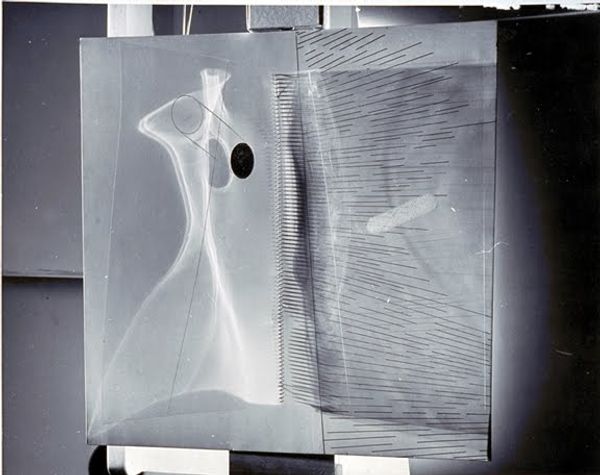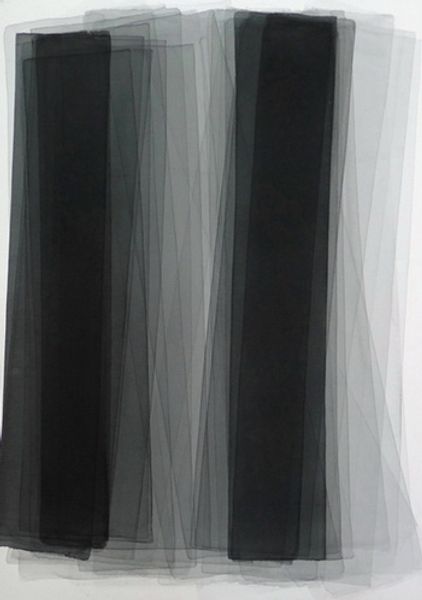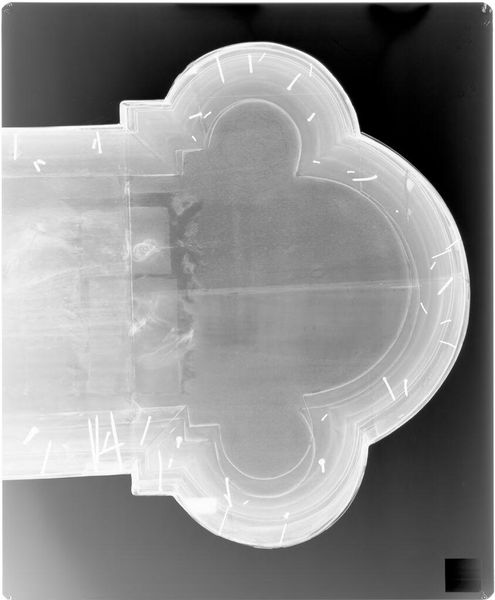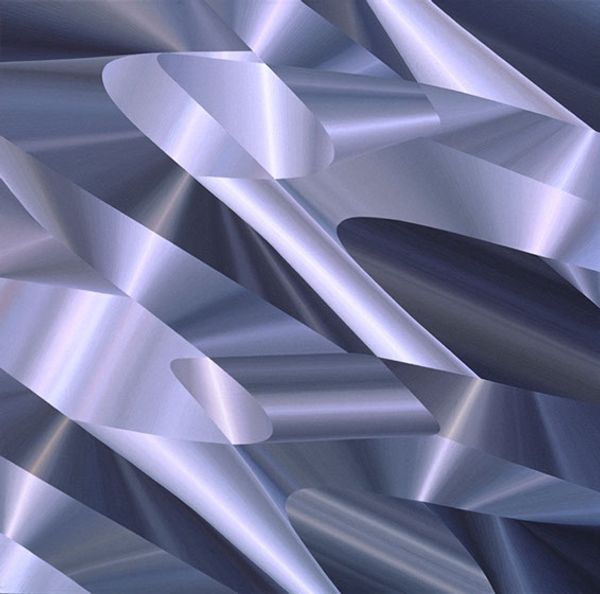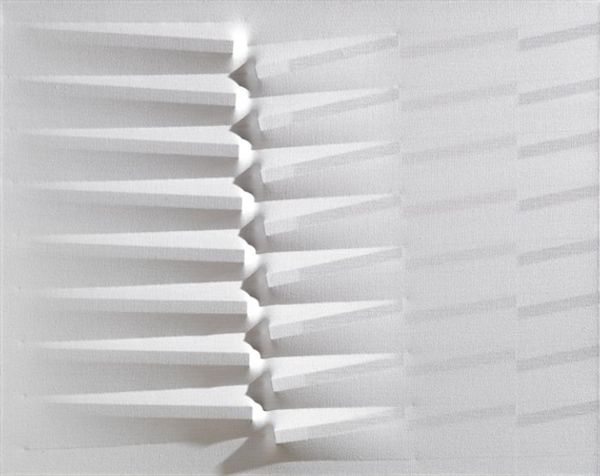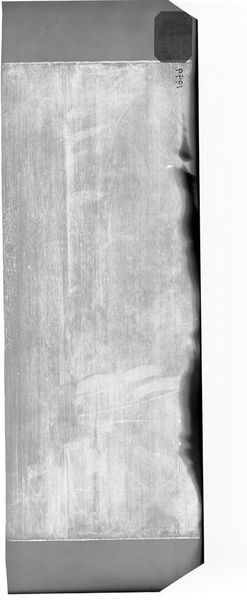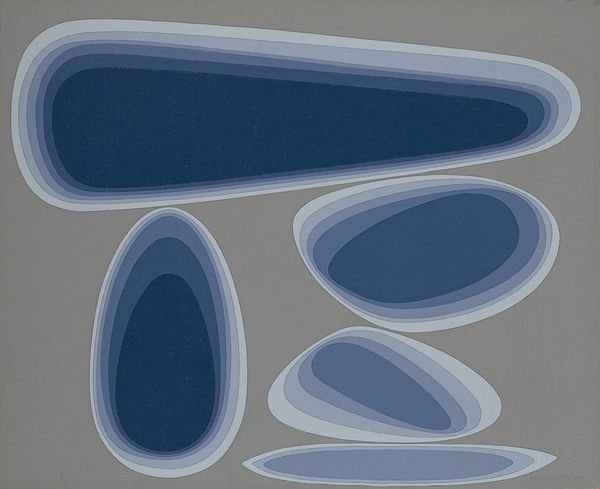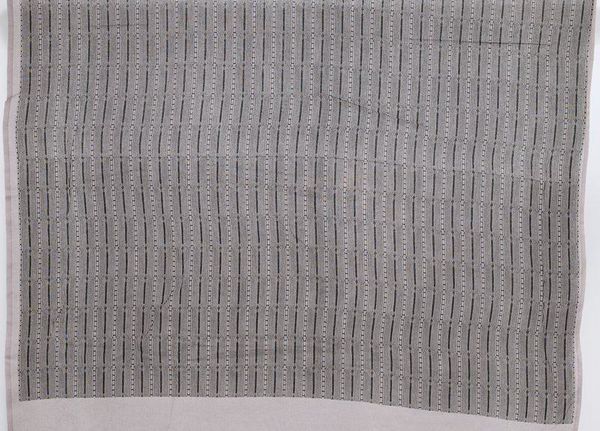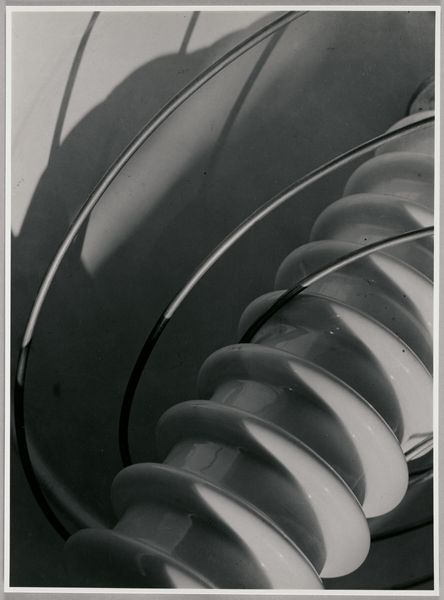
photography
#
portrait
#
abstract-expressionism
#
sculpture
#
form
#
photography
#
geometric
#
abstraction
#
nude
Dimensions: image/sheet: 25.4 × 20.3 cm (10 × 8 in.)
Copyright: National Gallery of Art: CC0 1.0
Curator: Standing before us is "Curves," a silver gelatin print created by Lotte Jacobi, sometime between 1946 and 1955. Editor: It's ghostly! Those flowing lines feel both soft and stark. There's a very sculptural quality here that’s incredibly evocative. Almost dreamlike, would you say? Curator: In terms of the visual vocabulary at play, we are presented with a stark black-and-white composition—a sophisticated interplay between light and shadow. The curve motif dominates, its sinuous form commanding attention. It subtly invites one to engage with ideas surrounding shape and spatial tension, where the surface planes have been deployed for optical seduction. Editor: Optical seduction! I like that. I think Jacobi was interested in stripping away context, offering only a hint, a curve, to suggest more than what's immediately seen. Is that a nude? It's like she's saying form, light, shadow that is all we really need, don’t you think? Curator: Precisely! Jacobi skillfully teases the eye. The photographic print embodies this fusion, with its sharp contrasts rendering an intimate subject, the curves of the human form or the drape of fabric perhaps, into the realm of abstraction. Editor: It walks that tightrope so well. One foot in representation and one in pure form. Knowing her background—her deep dive into portraiture, for instance—it makes sense that she distills something deeply personal down to these very simple forms, doesn't it? A bit naughty, really. What a daring way to show or…not to show… Curator: Her abstract vision emerges quite forcefully. Observe her technique and its capacity to reduce complex, organic forms into elemental, near-geometric lines. What’s also fascinating is the play between presence and absence, visibility and invisibility in how Jacobi uses tone, how her choice to constrain it results in some striking contrasts across the work, allowing light to literally reshape reality and lend a somewhat dramatic edge. Editor: It almost hurts the eyes the way Jacobi uses the negative space here—she builds the scene to the precipice where a misstep will render the whole image indecipherable. Knowing that she loved dance makes you see motion. The way the forms float, spin, unfurl and beckon us to lose ourselves in its sheer grace is lovely, don't you think? Curator: In all respects, it serves as an exceptionally rigorous aesthetic object, revealing, when analyzed closely, the nuanced interaction between Jacobi’s creative ingenuity and theoretical refinement. Editor: Jacobi reminds me that sometimes the greatest revelations come from restraint. Leaving something unsaid often speaks volumes. What an artist, indeed!
Comments
No comments
Be the first to comment and join the conversation on the ultimate creative platform.
